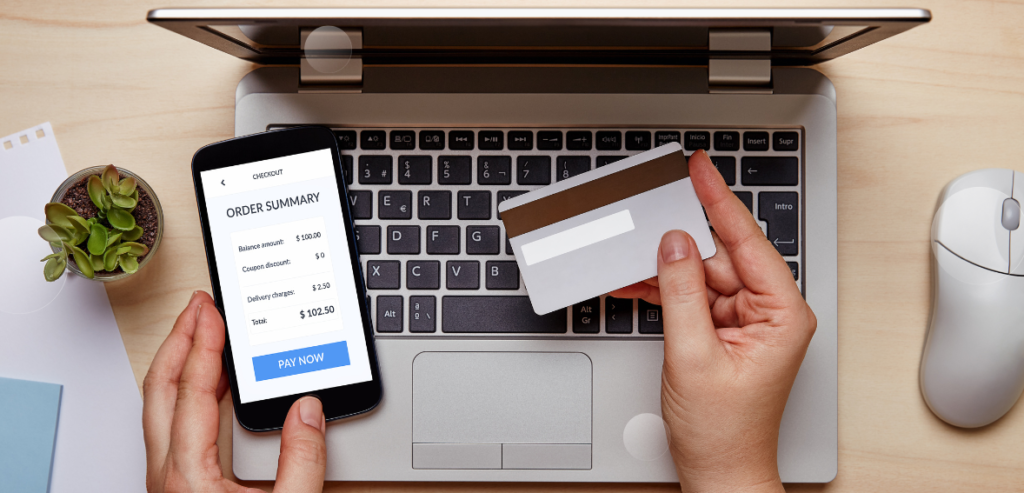If you are starting or moving your business to a subscription-based model, you need to choose an appropriate recurring payment plan to accept payments from your customers at regular intervals. Recurring payments, also known as automatic electronic payment, is a payment model where a certain amount from the customers’ bank or selected payment method is deducted every month or year. Customers are asked to complete the authorization form, agreeing to pay the company a specific fee according to a preset schedule to continue receiving the services or membership benefits.
Take Netflix and Amazon Prime, for example. These companies offer live streaming services for movies and web series lovers and charge a specific fee monthly or yearly. Many similarly subscription-based service providers have collaborated with reputable payment processors. Not only do you need to work with a payment processor, but for processing such types of recurring payments, you should use the software system for recording and managing the automatic payments seamlessly.
How Do Recurring Payments Work?

As mentioned above, many software providers offer a wide range of features that enable easy management of payments and billing. Although these systems come with varying price ranges, they offer the same benefits and work in a similar way. Customers sign a one-time authorization form and accept timely payments to continue receiving the specific services.
They sign up for the recurring billing model and are charged at regular intervals, whether it’s a quarterly payment system or a monthly subscription plan. Your customers’ credit/debit card details or other financial information is saved in the system and used for processing automated payments at specific intervals. They don’t need to enter the financial information repeatedly, as the payment is deducted directly from their accounts unless they cancel the subscription. Here are the steps for how the system works:
- Customers enter their card details on your website when signing up for the membership or particular service.
- Their card details are saved on your device for processing future payments
- They are permitted to store this information and deduct a specific amount from their accounts at regular intervals
- The saved data is then used to process the recurring transactions
How to Setup Recurring Payment?

First, you need to select a suitable payment method supporting the recurring billing model. PayPal is often the users’ first choice, as it is one of the most reputable payment processing companies. However, PayPal charges a high fee per transaction. Plenty of options exist, and most have the same recurrent billing process. The setup part is also the same for most software systems, but we have used Square to explain it to you in detail.
Square has a secure and robust payment vault where customers can securely save their credit/debit cards and other financial information. You can send the invoice for their purchase through email, and they can open Square’s payment page using the link.
They can process the payment following the link, or the merchant can do it on the customers’ behalf using the virtual terminal. Square and other recurring billing software systems trigger automated payments, where the amount is charged to the customer directly. They don’t have to repeatedly enter their credit card details when renewing their subscription plan. The amount is directly deducted, or they are asked for a confirmation message to decide whether they’d like to renew the membership or end the plan.
The process is pretty fast and convenient. It doesn’t need hectic management or a complex setup. Once you finish the setup part, the system will automatically start storing customers’ financial information and charge them the fees with the add-ons (if they have purchased any).
Benefits of Recurring Payments to Your Business
Recurring payments are becoming increasingly popular in online shopping, and it’s not hard to see why. Subscription payments simplify the entire billing process and provide a seamless checkout experience for your customers.
The main advantage for your clients is convenience. The recurring billing system is completely automated and hassle-free. They don’t have to go through a lengthy checkout process or input payment details every time they’re billed. Once they’ve set up an automatic payment plan, the money will automatically be deducted from their account, requiring no action.
Merchants also benefit from numerous benefits when it comes to recurring payments. Here are some of the most compelling advantages of subscription billing:
- Reduce Late Payments
Late payments can harm businesses by impacting revenue and customer relationships. With recurring payments, you set up the system once and trust that payments will be collected automatically according to your schedule. This means less time spent chasing customers for payments and having uncomfortable discussions about late payments, freeing up more time for other essential business activities.
- Reduced Effort
With the recurring payment model, businesses avoid chasing late payments or sending reminders to customers every billing cycle. The process is automated, saving the company time and effort.
Similarly, automatic payments lessen customers’ effort. They don’t have to respond to invoicing reminders or deal with the inconvenience of manual payments for their subscriptions. They only need to authorize payments at the beginning, and the rest is handled automatically. Automation also minimizes friction, a common issue with one-off payments where customers must decide for each purchase.
- Enhances Customer Experience
Recurring payments provide extra convenience for customers. This model also offers them predictability regarding when and how much they’ll need to pay. By reducing the effort required to access your company’s products, recurring payments give customers the sense of saving both time and money in the long haul.
- Protect Against Fraud
Integrated payment gateways handle recurring payments securely and store customer payment information on their servers. They safeguard against fraud using techniques such as tokenization and adhering to industry standards like the Payment Card Industry Data Security Standard (PCI DSS).
These fraud detection and prevention measures shield funds from fraudulent activities and enhance the business’s reputation for trustworthiness among customers. Additionally, they save resources that would otherwise be spent on identifying and resolving fraudulent transactions.
What is the Processing Fee for Recurring Payments?

These automated invoicing apps charge a small percentage of the transaction cost as the processing fee. The fee structure varies from company to company. For example, Square charges a 3.5% fee on every transaction plus 15 cents for all recurring payments. This means a $100 transaction costs you a flat fee of $3.65.
The best part is Square doesn’t charge any additional fee for account maintenance or hidden charges. You may have to pay additional account maintenance costs if you choose other recurring billing systems.
Who Needs the Recurring Payment Model?
The recurring payment model works wonders for any business that charges a regular fee for membership or any service. Let’s see who needs to set up the recurring payment system for their business.
- Tuition: You can charge a monthly recurring fee if you offer tuition, fitness training, music or dance classes, yoga classes, or other services.
- Service Providers: If you provide house cleaning, lawn maintenance, personal training, therapies, counseling, and similar services, you could charge your customers in batches or individually—whatever suits your preference.
- Memberships: Memberships are required for gyms, fitness centers, blogging sites, and other services. A membership is also required to continue using video streaming services. As mentioned above, a subscription-based model is an ideal payment system for such membership plans.
In summary, if you are in any business that requires recurring payments, where customers are to be charged at regular intervals, the subscription-based payment invoicing model is your best bet. These software apps can either group customers into a specific batch or charge each individually. The goal is to make it easier for your customers to process the payments flawlessly.
Things You Need to Start Accepting Recurring Payments
Accepting recurring payments encompasses two primary elements. First, there’s the billing logic, which calculates the costs associated with purchases. This includes calculating purchase prices, considering factors like grandfathering and proration, and requesting customer payments. Second, payment processing is crucial as it involves the actual transaction process. During this phase, the amount is credited to your merchant account.
You can accept recurring payments with just a payment processor if you have a self-built billing engine or use the basic billing engines provided by popular payment gateways. However, as your business grows rapidly, managing payments becomes increasingly challenging.
Factors like extensions, free trials, discounts, evolving pricing tiers, upgrading customer plans, credits, and taxations for different countries add complexity. Recurring billing systems, working alongside payment gateways, automate recurring payments as your subscription business scales. While accepting payments is crucial for any business, it’s also an opportunity to provide a positive payment experience to your customers and build trust. Now, let’s explore some essential elements for starting to accept recurring payments:
Payment Gateway
A payment gateway is a technology that verifies and securely transfers payment information among the parties in a payment transaction.
Payment gateways typically include security features like encryption, tokenization, and fraud prevention solutions. Additionally, they must adhere to strict procedures outlined in the PCI DSS compliance standard. This involves undergoing annual audits and recertifications to maintain compliance. When selecting a payment gateway, you should consider:
- Cost: Take into account transaction fees, monthly charges, and setup fees. Your transaction volume and value should influence your choice.
- Security: Look for a PCI-compliant gateway to ensure your customers’ payment information stays secure. Features like transaction routing, response verification, and data encryption also enhance security.
- Customer Support: Reliable support is crucial for addressing technical issues or inquiries. Check reviews and testimonials to assess their support quality.
- Integration: Ensure easy integration, especially for mobile apps used by merchants and developers.
- Payment Methods: Choose a gateway that supports various payment modes, such as debit cards, credit cards, digital wallets, and gift cards.
Here are some popular examples of payment gateways:
- PayPal
- Square
- Stripe
- 2Checkout
- Adyen
Recurring Bill Software
Recurring billing software assists businesses in handling their periodic billing tasks for subscription-based products or services. These tools can automate tasks like generating invoices, processing payments, and managing recurring billing schedules. Overall, they streamline the revenue management process for businesses. When choosing a recurring billing solution, consider the following factors:
- Determine if the solution meets your billing needs, whether simple or complex.
- Check if the solution can seamlessly integrate with your current systems.
- Look for an intuitive interface to minimize errors during operations.
- Ensure the solution offers strong support for troubleshooting and ensuring smooth functioning.
- Assess if the solution can handle a growing number of subscribers and adapt to changing requirements.
- Confirm if the solution supports various pricing models, subscription plans, and customization options.
- Verify if the solution accommodates transactions in multiple currencies.
Conclusion
Securely setting up and accepting recurring payments is integral for businesses transitioning to subscription-based models. This payment approach, exemplified by services like Netflix and Amazon Prime, offers convenience to companies and customers. Understanding the process—from transaction authorization—is critical. Essential elements include robust payment gateways and recurring billing software. Transparent consideration of processing fees is vital. The recurring payment model benefits various sectors, including tuition, service providers, nonprofits, memberships, SaaS companies, insurance providers, and telecommunication companies.
All in all, the primary purpose of the recurring billing system is to streamline the processing of your customers’ payments. These services are designed for membership or subscription-based service providers. They make it easier for your customers to process transactions with simple clicks and offer you the convenience of managing the payment records most efficiently.
Frequently Asked Questions
What are recurring payments?
Recurring payments are automatic payments that a customer authorizes a merchant to charge to their credit card or bank account regularly. These payments are typically used for subscription-based services, memberships, and utility bills.
How do I set up recurring payments for my business?
To set up recurring payments, you'll need a payment processor that supports this feature. First, select a payment gateway or processor that offers recurring billing options. Then, integrate this service into your business operations, which might involve setting up payment forms on your website and obtaining customers' consent for recurring charges.
What are the benefits of accepting recurring payments?
Accepting recurring payments can improve cash flow predictability, reduce billing and collection costs, enhance customer convenience by automating their payment process, and potentially increase customer retention by providing an easy way to manage subscriptions or memberships.
Are there any risks associated with accepting recurring payments?
While recurring payments offer convenience and efficiency, they also carry risks, such as payment declines due to expired or canceled credit cards, increased chargeback rates, and potential customer dissatisfaction if canceling subscriptions is difficult. Ensuring clear communication and an easy cancellation process can mitigate these risks.
What types of businesses can benefit from recurring payments?
Any business that offers subscription-based products or services, memberships, or regular, predictable services can benefit from recurring payments. This includes SaaS companies, gyms and fitness centers, utility companies, and subscription box services.
How do I handle expired credit cards or declined transactions in recurring payments?
Payment processors often offer account updater services that automatically update expired or changed credit card information. For declined transactions, it's important to have a system in place to notify customers and retry the payment, either automatically or after updating payment details.
Can customers change their recurring payment details?
Yes, customers should be able to update their payment details. Ensure your system or service provider allows customers to easily change their payment information to avoid service interruptions due to payment issues.
What security measures should be in place to accept recurring payments?
Security is crucial for recurring payments. Ensure that your payment processor is PCI DSS compliant to protect payment data. Also, tokenization and encryption should be considered to safeguard customer information during transactions.
How are recurring payments different from one-time payments?
Recurring payments are automated transactions that occur at regular intervals, as authorized by the customer, while one-time payments require the customer to initiate and authorize each transaction manually.

